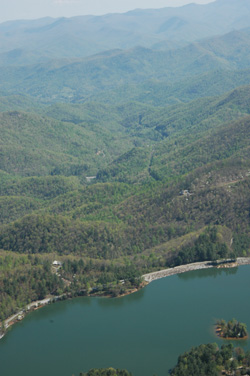The Tuckasegee relicensing has radically improved recreational opportunities along 35 miles of the Class II main Tuck, as well as createda new whitewater resource on the Class IV+ West Fork Tuck.

From 2001 through 2003 American Whitewater participated in an innovative negotiation process to decide the future operations of the dams on the Tuckasegee River and its forks. AW staff attended full-day meetings at least once a month for 3 years, and spent countless hours analyzing and assisting with studies, pouring over property maps, and developing proposals. We focused our efforts on whitewater paddling mitigation, the design of a environmental enhancement fund, and the removal of Dillsboro Dam. We worked closely with other stakeholders including our volunteers, the Carolina Canoe Club, local outfitters, Duke Power, and state and federal agencies throughout the process. Among the major achievements of the negotiations was the development of a flow regime for the Tuckasegee that met the ecological needs of the river and the interests of Duke Power, anglers, and paddlers.
Based on three years of work and negotiations, AW signed a settlement agreement in 2003 calling for sweeping environmental and recreational enhancements. Several local stakeholders backed out of the agreement at the last minute and challenged the agreement with the FERC and in court. These challenges focused on preventing the removal of Dillsboro Dam, cost a great deal of money, caused significant delays, and were ultimately unsuccessful. The dam was removed in 2008, and the licenses were issued for the projects in 2010. Access projects began almost immediately and in 2013 releases began on the West Fork.
The West Fork really is a cool creek run.Check out the WF Tuck Flow Study Video! Note that most of the video was filmed at the first lower flow. We had to do our second higher flow run very quickly and could not shoot much footage. The second flow was much better and ultimately the second flow was selected for future releases. Note also that the video calls the first release 250 cfs, and the second 350. Subsequent analysis of the flows revealed that the first release was really about 180 and the second around 250.
